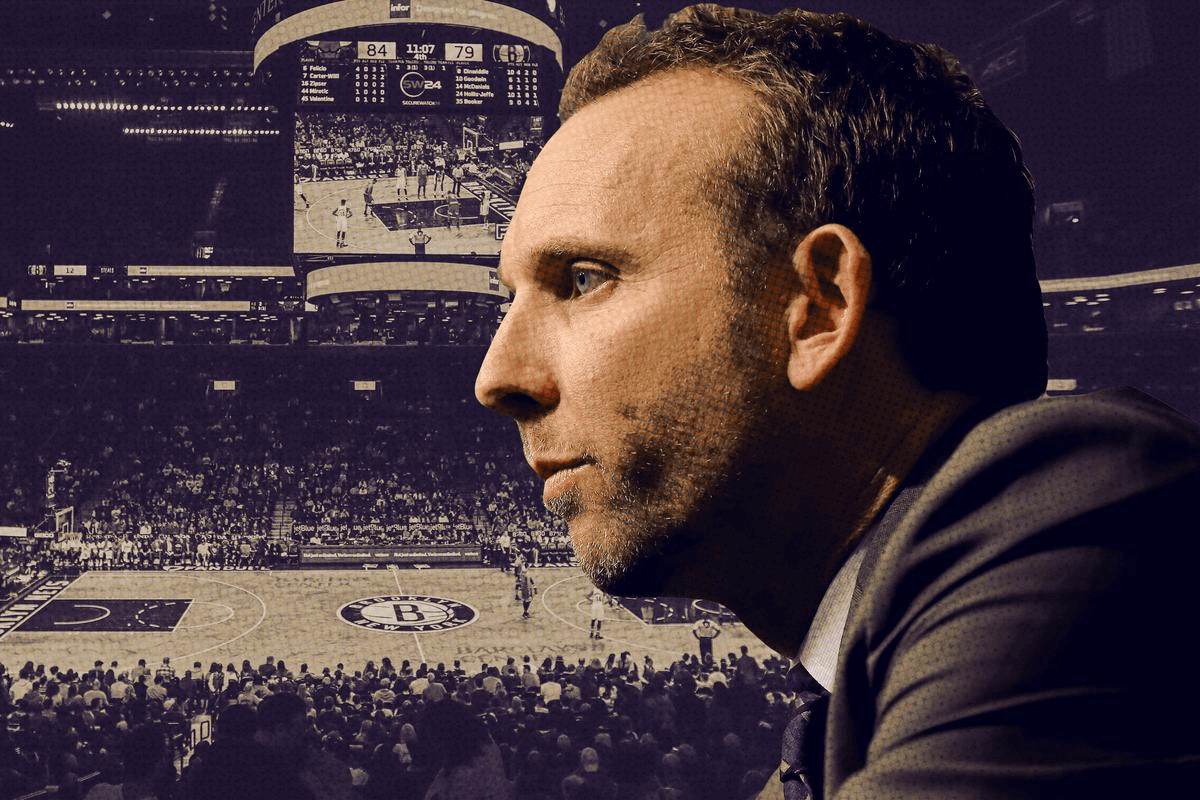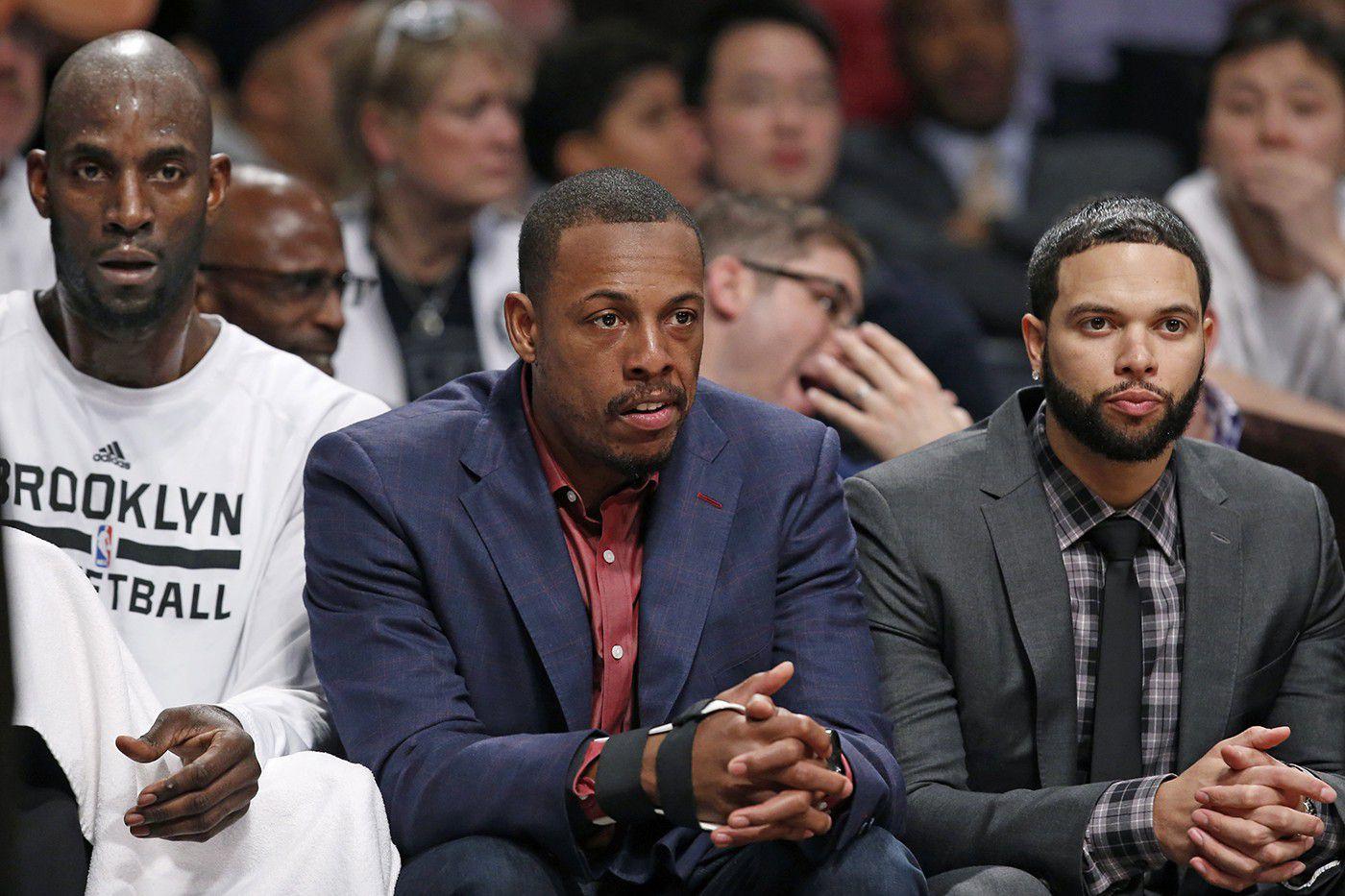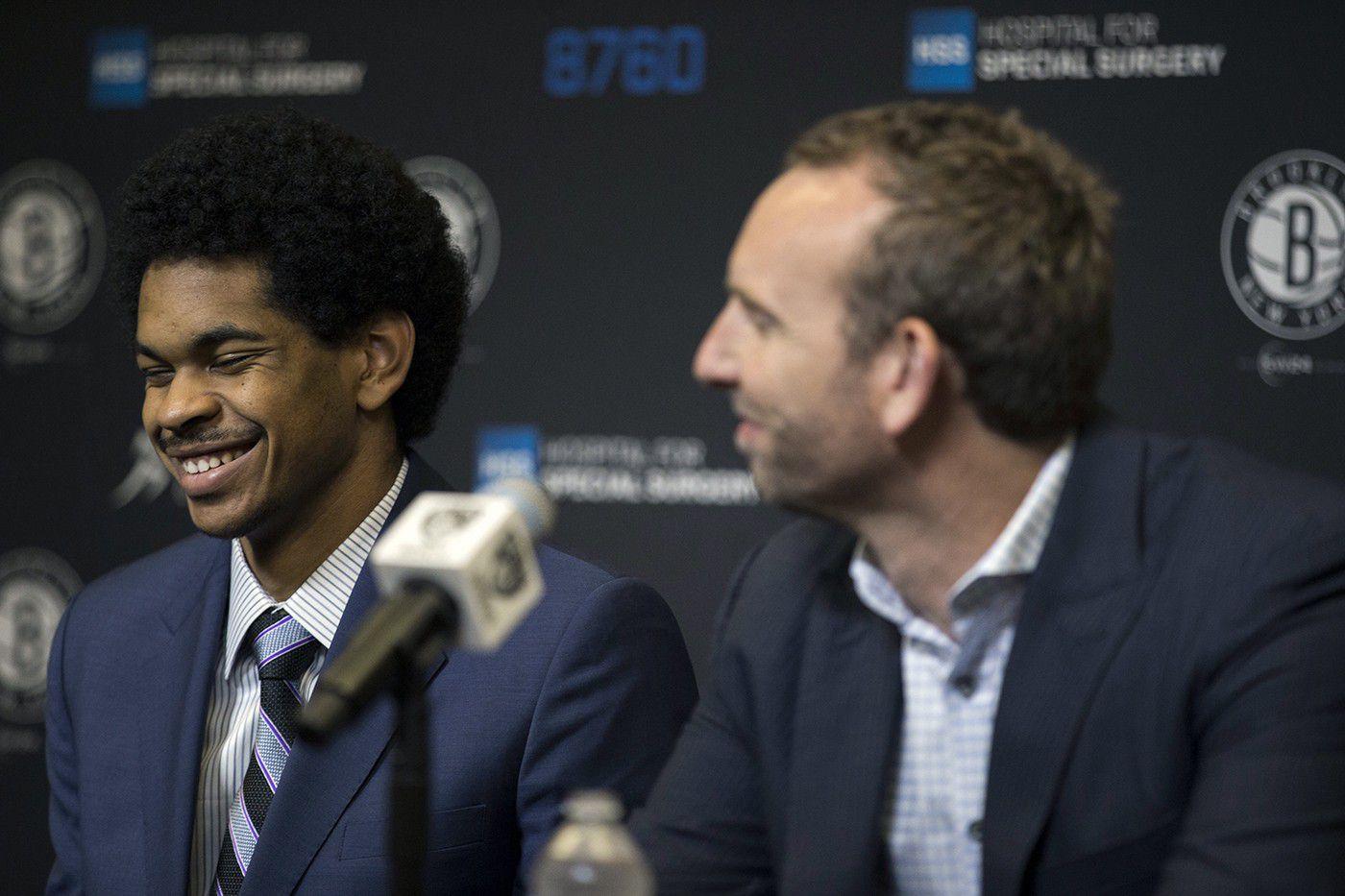
Over the weekend, the Nets landed DeMarre Carroll and the Raptors’ first- and second-round picks in 2018 for Justin Hamilton, an NBA rotation player who, if we’re being honest, is probably better known as an unlikely narrative device in Zach Lowe’s column on the NBA’s scoring explosion last season than he is as a Nets big man. It was a move that earned nearly universal approval, leveraging one of the few advantages Brooklyn had over its peers (abundant cap space) and turning it into several assets out of virtually nothing.
The trade does not alter the Nets’ immediate fate; it could be argued that the Raptors, who are on the cusp of dipping below the luxury tax line, benefited more from ridding themselves of the $30 million remaining on Carroll’s contract. But it was one of those beautifully executed 3-yard gains, a sign of forward progress. After years of self-induced paralysis, that in itself is encouraging. The Nets for years were in a dark, dark place and have now stumbled into an area notably less so. To understand what GM Sean Marks has accomplished in his year and a half with the team, you have to hold your nose and take a dive back into that abyss. In other words, you have to put yourself in his shoes.

Even in a league that has begun to reward nonlinear thinking, the tiers of team-building can appear to be awfully regimented. More and more to the NBA’s dutiful observers you’re either contending, burning time and money on the treadmill of mediocrity, or blowing it up. The term "mediocrity treadmill" was, ironically, coined in 2011 at an MIT Sloan Conference basketball analytics panel by Kevin Pritchard, the current Pacers president of basketball operations who recently traded superstar Paul George for talented role players in Victor Oladipo and Domantas Sabonis. It was a snappy encapsulation of what fellow panelist Mark Cuban had explained earlier in the talk: "The worst position you can be in [in] the NBA is to be mired in mediocrity."
That’s the truism that has been espoused for the past half-decade, and was the basis of the religion Sixers fans built around their idol, Sam Hinkie. But all it takes is a walk across the bridge to realize the falsehoods of it all; if you think your team being unexceptional is absolute bottom, you just aren’t imaginative enough. Life has a way of showing us that things can always get worse. In the NBA, life used Brooklyn as its unfortunate example.

The cataclysmic trade between the Nets and Celtics in 2013 will forever live in infamy, perhaps as the worst of all time. It was the pièce de résistance of a half-decade of hall-of-shame-level mismanagement by then-GM Billy King and his coconspirators. We saw Brooklyn offer the fountain of youth in exchange for a decaying empire headlined by Kevin Garnett and Paul Pierce, who were both on the wrong half of the wrong side of 30 by that point. For Boston, the deal has yielded three exponentially valuable first-round draft picks (no. 17 in 2014, no. 3 in 2016, no. 1 in 2017) with another on the way in 2018. For Brooklyn, the deal has placed the team in a level of purgatory that almost defies the parameters of the sport. The Nets have had control of their first-round pick exactly once since 2010 (in 2013, when they drafted Mason Plumlee no. 22 overall). Let’s recap what has happened with the picks the team has traded since 2010 (sorry, Nets fans):
- 2011: Utah selects Enes Kanter no. 3 overall (Deron Williams trade)
- 2012: Portland selects Damian Lillard no. 6 overall (Gerald Wallace trade)
- 2014: Boston selects James Young no. 17 overall (Garnett/Pierce trade)
- 2015: Atlanta selects Kelly Oubre Jr. no. 15 overall due to a pick swap with Brooklyn, trades his rights to Washington (Joe Johnson trade)
- 2016: Boston selects Jaylen Brown no. 3 overall (Garnett/Pierce trade)
- 2017: Philadelphia selects Markelle Fultz no. 1 overall, via pick swap with Boston (Garnett/Pierce trade)
Brooklyn will give up its 2018 first-rounder sight unseen. When the Nets make what will likely be a lottery selection in the 2019 NBA draft, it will be more than half a decade since they’ve used their original pick to draft a player in the first round. By the start of the 2015–16 season, after three postseason appearances in which the Nets reached the second round once, the team slid off of the mediocrity treadmill and fell into something much bleaker.
Hinkie established a platform through which Sixers fans could remain engaged in a game beyond the dichotomy of good or bad, win or loss; fans could celebrate the wins, few and far between, in a traditional manner, while also celebrating what the losses were building toward in a way that felt countercultural. He helped spawn a movement of like-minded fans who saw that maybe the real wins were the friends they made along the way — those friends being top-three picks, of course. But there was always that incentive — to drastically increase the likelihood of a high draft pick — built into the Process.
The Nets, who not only forfeited picks, but opted either to apply loose protections or no protection whatsoever, did not have that light at the end of their tunnel. They’d fallen out of the three tiers of team-building altogether: they were one of the worst teams in the league without the means to do anything about it. There they were on the absolute fringe, an outlier whose situation denatured the very objective of professional basketball: Winning didn’t matter because they couldn’t; losing didn’t matter because there would be no compensatory relief. It was a Kafka story played out on hardwood.
That is what Sean Marks inherited in February 2016.

Considering how the draft and free agency have become the NBA’s third season, transactions often betray as much of a team’s personality as what happens on the court. Tom Thibodeau retrofitting the Wolves with the familiar components of past haunts shows a team led by a man of habit; his blockbuster trade with his former employer shows a man who isn’t over his dismissal. As such, in a short time Marks has constructed an identity for the Nets from a transactional perspective: They might be the pettiest little team in the league. The way they’ve dealt with restricted free agents has become their weapon of the weak.
Since Marks took office, the Nets have signed offer sheets with four different restricted free agents and haven’t landed a single one. They’ve offered $37 million to Donatas Motiejunas, $50 million to Tyler Johnson, $75 million to Allen Crabbe, and $106 million to Otto Porter Jr. over the past two summers. Embedded in those offers have been all sorts of booby traps: player options, poison-pill structuring with an overloaded first year, 15-percent trade kickers. So far, they’ve been unsuccessful, but at this point, it almost feels like the failure is by design — a "tanking" of free agency that engages in brinkmanship, forcing opposing teams into difficult choices, while endearing the team to agents who suddenly see it as a place that is willing to do the most for their clients.

But as to not completely alienate themselves from the rest of the league with their pettiness, they’ve also become willing accomplices for teams eager to get rid of a body in exchange for assets. That, more than anything, has laid the foundation for how the Nets have crawled out of no-man’s-land.
In addition to the two years and $30 million remaining on Carroll’s contract, the Nets are also swallowing the remaining $48 million over three years on Timofey Mozgov’s contract, and $20 million over three years on Andrew Nicholson’s deal (a low-key salary dump in the Bojan Bogdanovic trade). For their troubles, the Nets landed the no. 2 pick in the 2015 draft, D’Angelo Russell, the no. 22 pick in the 2017 draft, Jarrett Allen, and a first-rounder (lotto protected) and second-rounder in 2018. The Nets are harvesting youth, and aren’t afraid to pay to continue accumulating assets.
But rather than create new bad contracts with their surplus in cap space, Brooklyn has taken to absorbing past contracts that fit within its timeline. The Nets still have one more year of purgatory left to go — no matter how well or how poorly they play next season, they will forfeit their first-round pick to Boston — so loading up on expensive, ineffective players doesn’t exactly affect what the Nets are hoping to achieve. However, by the time they make that pick in 2019, their roster could conceivably consist mainly of players on rookie deals and young players on their second contracts, with just one season of Mozgov’s gargantuan contract left to endure.
Around half the teams in the league could find themselves paying the luxury tax, which is a startling amount considering how many legitimate championship contenders there are. Teams will be looking to shed salary, and even after the Carroll trade, the Nets will be in good position to facilitate. Part of Marks’s job is looking into the future, and he’s done a good job of mapping out where his team stands in comparison with leaguewide trends.
"The teams with potential cap space shrink and shrink and shrink," Marks said last December. "So it’s not like last year when there were a couple dozen teams that could offer big salaries. It’s shrinking as it goes. There’s no secret out there now. Every team knows we’ve got plenty of cash to spend and maneuver around. We’ll just be strategic in how we do it."
According to Albert Nahmad, the Nets will have roughly $16 million remaining in cap space once the Carroll deal is official (and Jarrett Allen officially signs his rookie contract), with a maximum of $21 million available if they rid themselves of their nonguaranteed contracts. Should they decide against a big run for a player like Kentavious Caldwell-Pope, they’ll likely have enough cap space to take on another expensive player — which means they’ll have the leverage to ask for an even sweeter pot of assets down the road. "We are going to be aggressive and creative in how we acquire assets, obviously with the hand we’ve been dealt," Marks said last December.
Make no mistake about it: The Nets are still going to be bad (their roster is extremely imbalanced; their projected starting small forward, Carroll, is getting paid $15 million a year, and was an unplayable husk over the past two postseasons). But they’ll be recognizable as a normal, struggling team with a bright future, and not an existentially doomed one. That, in itself, is revelatory progress. Three years ago, a painfully mediocre Brooklyn Nets team paid nearly $90.6 million in luxury tax, a record-obliterating figure that, despite a windfall in team spending power over the past two seasons, has yet to be matched, let alone topped. For reference, the Warriors’ tax bill is projected at $37 million once their roster is rounded out; the Cavs, who will once again finish with the highest payroll in the league, will likely pay somewhere in the ballpark of $57 million. The repeater tax levied on Golden State over the next two summers will soon blow Brooklyn’s ignominious place in NBA salary cap history out of the water. For now, though, it stands as a monument to how shortsighted planning can ruin a franchise for a decade.
Sean Marks has flipped the script entirely, carving a future out of the abyss by taking a longer view. He’s shepherding, in my opinion, one of the most interesting teams in the league. True to their strategy, in proving that there is no such thing as an untradable contract, the Nets are also proving that there is no such thing as an unsavable team.
An earlier version of this piece incorrectly stated that the Nets hadn’t controlled their original first-round draft pick since 2010; they controlled it in 2013.

